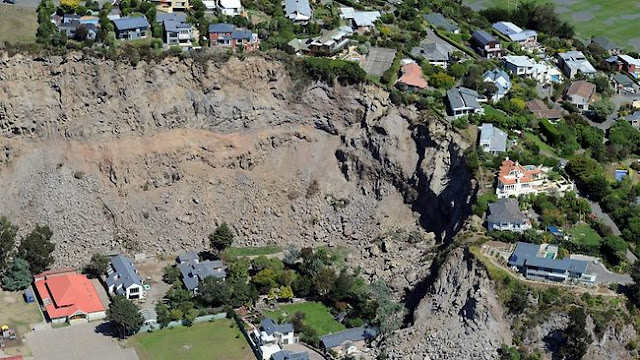Being from California, I was prepped for earthquakes. We practiced dashing under our desks and into doorways. We never got to put this practical knowledge to use, but just having the education made us familiar with the type of disaster. During my dorm days at Saint Mary's College in Moraga, CA, I got to experience a few rollers. Nothing too exciting thankfully (the dorms were 5 stories of cinderblock...) but they were frequent and detectable.
In the states, California gets a bad rap for being the land of earthquakes. In 1989 the Loma Prieta earthquake hit the San Francisco Bay Area (my home region). It was a 6.9 on the richter scale, and it lasted 10-15 seconds. 63 people in Northern California lost their lives, and thousands were injured. It is famous in the U.S. because a) it was the first earthquake to ever be recorded on live TV, which b) happened because the earthquake struck during the warm-ups for the 3rd game of the World Series between the SF Giants and the Oakland A's. I was 4 years old at the time and felt neither the earthquake, nor the pain of the A's defeating the Giants to win the World Series.
Christchurch, New Zealand has recently experienced two major earthquakes. The first on September 4, 2010, and the second on February 22, 2011. Incidentally, we were in Alexandra NZ (some 4 hours south of Christchurch) when the February one hit. We were riding mountain bikes and didn't feel it, but many from Alexandra did.
 |
| Image Via |
The September earthquake had a magnitude of 7.1. It caused a lot of damage to buildings downtown, but had no direct fatalities. It was also centered in Rolleston. The February earthquake, centered in Lyttleton (10k from Christchurch), has actually been classified as an aftershock of the September quake, with a magnitude of 6.3. The number can be deceiving though. The February quake caused 185 directly related deaths and an estimated $15,000,000,000 (that's billion) in damage. Nearly half of the lives lost were from the CTV building which collapsed and caught fire. I won't post an image because it makes my heart hurt. If you google it, you'll see why.
 |
| Christchurch Cathedral, the Garden City's icon... before and after Image Via |
Today, the Christchurch Earthquake Commission (EQC) faces 10,000 houses that need complete demolition and 100,000 houses that need earthquake repairs. There are approximately 1,100 multi-story buildings in downtown (now known as The Red Zone, and no-one is allowed in) that need to be or have already been demolished.
 |
Image Via |
Tens of thousands of structures were actually damaged or destroyed by liquefaction, as a result of the earthquake. Liquefaction is basically caused by water (ocean) saturating solids (soil and sub layers beneath homes and streets) and turning the solids into liquid. In many suburbs at sea-level and close to the ocean, liquefaction caused sink holes, flooded streets and homes, and produced a myriad of health issues. At a recent meeting with a bunch of geologists who are working on the rebuild, one told me that liquefaction used to be one paragraph mentioned in a textbook he once read. Now Christchurch is the world's liquefaction lab rat.
Many houses that will be demolished will not be rebuilt due to risk of liquefaction in the future. These homeowners will receive money for the value of their homes worth as deemed in 2007 (the market was actually better then), and they can relocate to their suburb/county/country of choice. I recently met a woman who got to experience the true silver lining of the storm cloud: she hated her home in New Brighton, but couldn't afford to move because her house had depreciated in value. After her home was destroyed by liquefaction, she received a check from the government for the value of her home in 2007. She was then able to move her family to the suburb where she had always wished she could be.
 |
| Liquefaction Image Via |
Another cause of much structure damage (although only a fraction compared to liquefaction) was landslide. The suburbs of Sumner, Lyttleton, and Redcliffs were the most affected. For comparison though, only 3 deaths in Sumner and 2 in Lyttleton were caused by landslides. The homes in these suburbs tend to be in the million dollar range though, which tallies up a lot of fiscal damage.
 |
| Image Via |
Of course, many people fled Christchurch. An estimated 10,600 folks have fled for sturdier ground since February 2011. That may seem like a lot, but 10,600 people is roughly just 4% of the population. Christchurchians are a tough lot. They are resilient and hopeful. They reminisce about how "fab" downtown once was, and they are excited about what it will be again. They are actually quite inspiring.
But why would we move here? And are we at risk?
I'll post about that, as well as my personal photos of the earthquake damage as it stands now, in "Part 2" tomorrow. But I will leave you with this:
 |
| Please click on the link below for inspiring stories after the Christchurch earthquakes: Four Hundred Thousand Stories |

No comments:
Post a Comment